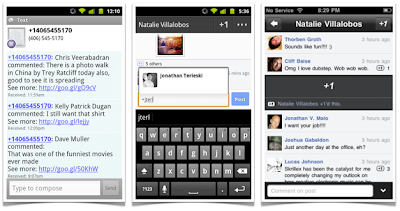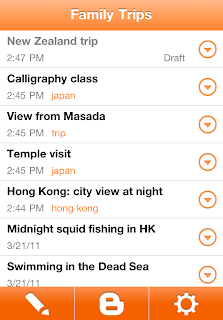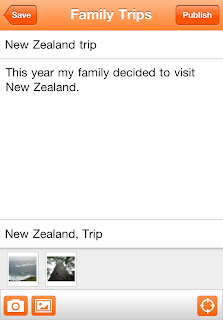We started the Google+ project to help make online sharing more like real-world sharing. Of course, in life we increasingly share on the go, so over the past ~90 days we’ve developed Google+ apps for Android, iOS and the mobile web.
During this time we've made lots of improvements to the project, and in fact, the team just announced its 100th new feature overall (open signups). But our work is far from done, and today we're bringing seven additional Google+ features to your mobile device.
Hangouts on your mobile (a.k.a. feature #92)
Seeing someone face-to-face is one of the most important ways you can connect with them. Unfortunately we're often too busy, too far away, or too unpredictable to make meetups a regular occurrence. That's why we're making Hangouts available on phones with Android 2.3+ and front-facing cameras (iOS support coming soon). Just find an active hangout in the Stream, and you can join your friends face-to-face-to-face:
 |
| Hangouts on your phone: Stream View (left), Green Room (center), Portrait View (right) |
101, 102, 103. You asked for it
We take your feedback very seriously, and we do our best to deliver your
most-requested features as quickly as possible. So today we're launching three more things you've been asking for in Google+ mobile:
- Improved SMS support. Users in the US and India can now post to Google+, receive notifications, and respond to group messages via SMS (with more countries on the way). To start texting, just verify your phone number in Google+ settings.
- Improved +mentions support. To add someone in your circles to a conversation (or simply get their attention), you can now +[their name] inside a post or comment.
- +1’ing comments. When you read a great comment in the Stream, you can now +1 it directly from your iOS device (with Android coming soon).
 |
| SMS (left), +mentions (center), +1’ing comments (right) |
104, 105, 106. Giving you more choices
The most important part of Google+ is you, so we want to make sure you have meaningful ways to personalize your experience -- from selecting just the right people to share with, to switching between the app, the web, and SMS as you see fit. Today we're excited to bring three new options to mobile users:
- Edit your profile photo. You can now put your best face forward, from where you happen to be. Just visit your profile, click edit, and you can choose or take a new picture.
- Customize your notifications. Some notifications may be more important than others, especially when you’re on the go. Now you can decide which ones you see (or not) on your phone.
- Make some room. If you’re taking lots of photos, or installing lots of apps, then internal storage can sometimes shrink. That’s why you can now move the Google+ app to SD storage on Android devices.
 |
Edit your profile photo (left), Notification settings (center), Move to USB (right)
|
107. So long Huddle, hello Messenger (and hi there, photos)
As we move from limited field trial to open beta, we’re renaming Huddle to Messenger. More importantly, we’re adding new functionality to Messenger that makes group communication even more fun: photo sharing. So now when you’re sitting down for a meal, or kicking back on vacation, you can show your circles what’s happening, right this second:
 |
Messenger: Homescreen (left), Choosing a Photo (center), Posting a Photo (right)
|
We hope you enjoy today’s round of Google+ mobile features. There’s plenty left for us to do, so we’ll keep listening, and working to make your mobile experience that much better. In the meantime, you can try the new app (on
Android and the
mobile web today, and on
iOS soon), and let us know what you think.
Posted by Punit Soni, Google+ Mobile PM













